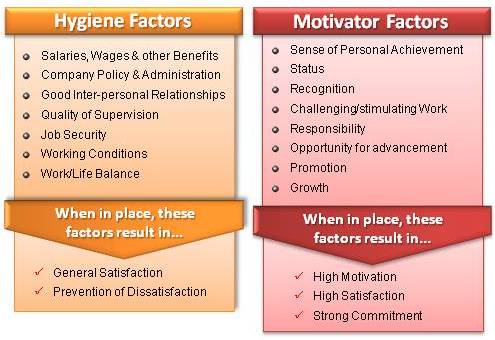Frederick Hertzberg’s Two-factor Theory
A major work in the field of employee motivation is done by Frederick Hertzberg (1964) that includes Two-factor Theory among other works of the author. According to the Two-Factor Theory a distinction has to be made in the workplaces between motivators and hygeine factors.
Motivators cause the employees to enhance the level of their performance and effectiveness in the workplace and include career growth, responsibility, achievement etc. Hygeine factors, on the other hand, are essential in the workplaces in order for the employees not to be dissatisfied, at the same time, when these factors do not cause satisfaction.
Hygiene factors include job security, financial compensation, the quality of management etc., whereas motivator factors are recognition of contribution by management, personal and professional growth opportunities, status associated with the position etc.
It is important for managers to be able to make clear distinction between motivators and hygiene factors. This is because while the provision of hygiene factors may lead to greater level of employee satisfaction, it does not necessarily contribute to the level of employee motivation. Therefore, apart from ensuring the provision of hygiene factors in an effective manner, managers need to invest in motivational factors as well.

